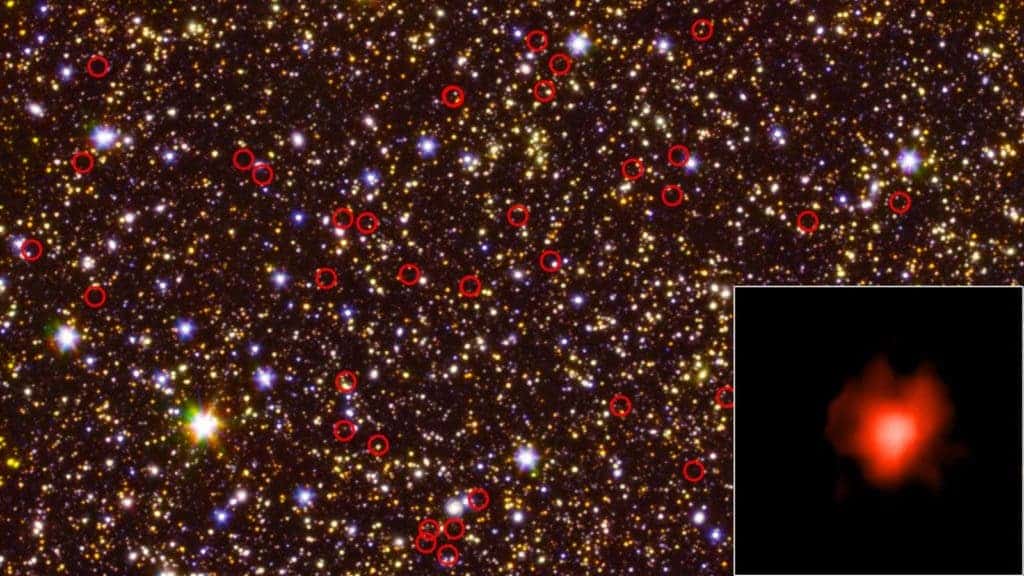
For all its mind-bending features, the universe is a pretty ordered place. Stars and planets are neatly arranged into solar systems; solar systems have vast swaths of space between them and are themselves arranged into galaxies. Space is also transparent and decently lit by stars, which is nice because it allows us to see at large distances, and, because of how light works, also allows us to see in the past.
But it wasn’t always like this. In its earlier days, the universe was much more tumultuous. For the first 377,000 years, it was a soup of various types of matter and antimatter, finally becoming cool enough for individual atoms to form — but it was still dark and murky. Even some 1 billion years after the Big Bang, when the universe had become transparent, there weren’t too many sources of light because it takes such a long time for mass to collapse into stars and galaxies, though light had been sparked nonetheless.
Here’s the thing, though: while Dark Ages of the universe started around 377,000 years after the Big Bang, there was still some radiation. Something started exciting the hydrogen with radiation, ionizing it and producing light. Astronomers are not really sure how this happened, though.
No one really knows when the first stars in the universe came to be. There is evidence suggesting that they formed some 100-200 million years after the Big Bang — but did they have enough energy to produce this ionization phenomenon? That’s hard to say.
Now, a new study finally sheds some light on this issue.
“It’s one of the biggest open questions in observational cosmology,” said astronomer Stephane De Barros of the University of Geneva. “We know it happened, but what caused it? These new findings could be a big clue.”
In an attempt to answer this question, De Barros and colleagues directed the Spitzer telescope at two separate regions of the night sky. The telescope detected 135 galaxies that formed just 730 million years after the Big Bang, and they were very different from the galaxies we’re used to seeing.
For starters, they were very bright in two specific wavelengths of infrared light produced by ionizing radiation interacting with hydrogen and oxygen gases within the galaxies. This suggests that the galaxies were dominated by hydrogen and helium, containing very small amounts of “heavy” elements (like nitrogen, carbon and oxygen) compared to stars found in average modern galaxies. But the most surprising (and important) finding was that they were so bright — much brighter than researchers anticipated.
This suggests that average galaxies at the time were much brighter than average galaxies are now.
It’s the first study to document the brightness of galaxies from this period. Although these galaxies were not the first generation, they are still a very old group which could shed new light on this reionization era, a key process of the evolution of the universe.
The fact that these observations could even be made with Spitzer was surprising, researchers say.
“We did not expect that Spitzer, with a mirror no larger than a Hula-Hoop, would be capable of seeing galaxies so close to the dawn of time,” said Michael Werner, Spitzer’s project scientist at NASA’s Jet Propulsion Laboratory in Pasadena, California. “But nature is full of surprises, and the unexpected brightness of these early galaxies, together with Spitzer’s superb performance, puts them within range of our small but powerful observatory.”
“These results by Spitzer are certainly another step in solving the mystery of cosmic reionization,” said Pascal Oesch, an assistant professor at the University of Geneva and a co-author on the study. He also adds that the James Webb telescope, which is set to launch in 2021, will study these stars with a mirror 7.5 largers than Spitzer’s. “We now know that the physical conditions in these early galaxies were very different than in typical galaxies today. It will be the job of the James Webb Space Telescope to work out the detailed reasons why.”
The study has been published in the Monthly Notices of the Royal Astronomical Society.


